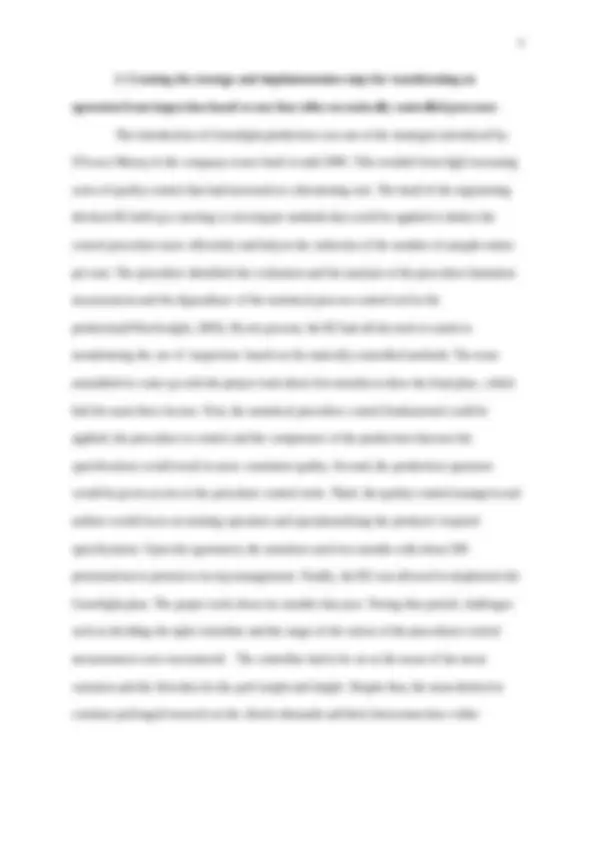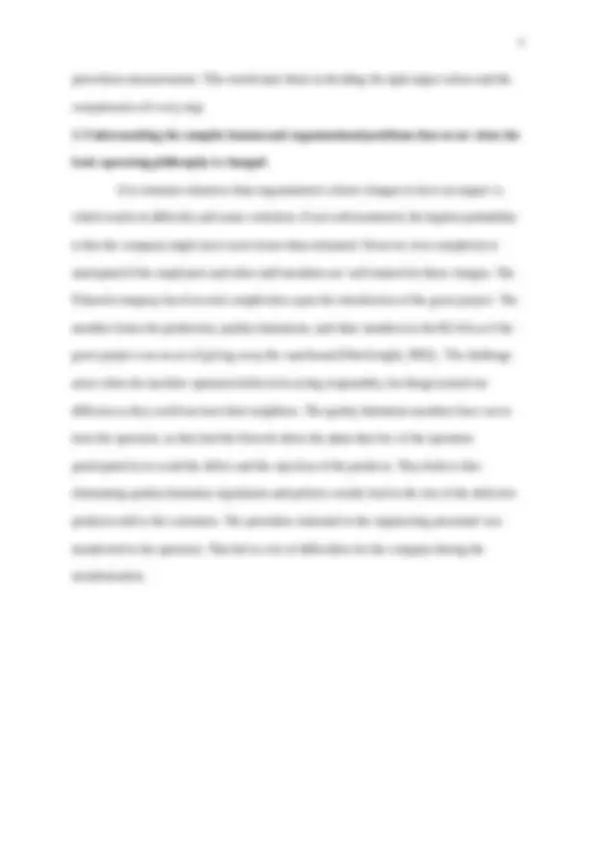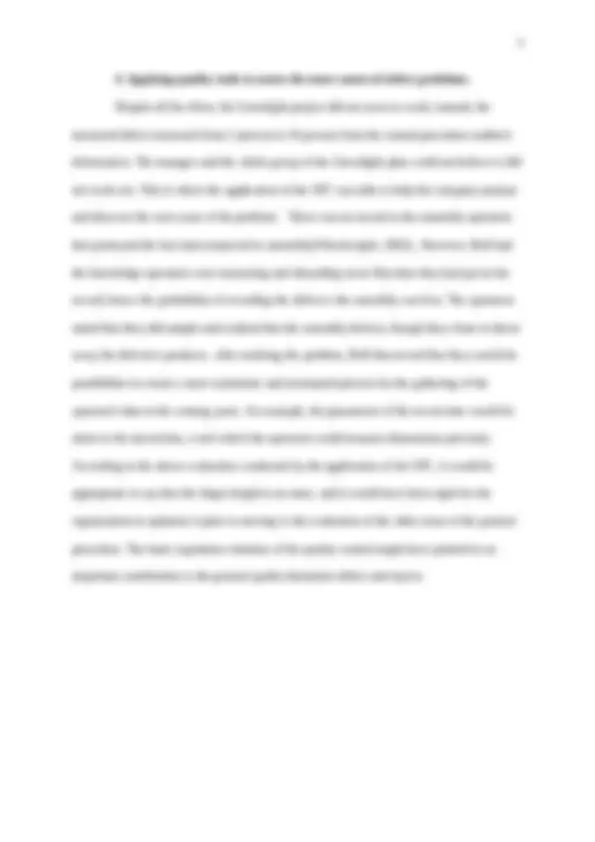





Study with the several resources on Docsity

Earn points by helping other students or get them with a premium plan


Prepare for your exams
Study with the several resources on Docsity

Earn points to download
Earn points by helping other students or get them with a premium plan
Community
Ask the community for help and clear up your study doubts
Discover the best universities in your country according to Docsity users
Free resources
Download our free guides on studying techniques, anxiety management strategies, and thesis advice from Docsity tutors
This case study explores the quality control challenges faced by polaroid in the 1980s, focusing on the transformation from an inspection-based approach to a statistically controlled process. The document details the introduction of the greenlight production strategy, the steps taken to implement it, and the complex human and organizational problems that arose during the transition. It also discusses the application of quality tools to assess the root causes of defect problems and the limits of product sampling and inspection methods, particularly for a product that is destroyed by the inspection process itself.
Typology: Summaries
1 / 7

This page cannot be seen from the preview
Don't miss anything!




Polaroid Case OPMT Rafia Mustafar University Canada West December 2023
1. introducing the construction and use of statistical process control (SPC) charts and understanding of the relationship between SPC and conformance quality The quality control division at the Polaroid had the power to create the right SPC, identifying the quality and issues that arose from the quality issue. The quality control auditors took about a sample of 15 completed cartridges containing a frame of 10. When the sampled product was found with a defect in many permitted limits, they were taken back, and further testing was conducted to solve the issue. In the sampling of more cartridges, most were rejected depending on the defect level. Obsolete defects were discovered in one of the lots, and the next sample in the lot was increased. In 1984 the team rejected about 1 percent per sample. Before the team had conducted the auditing of the completed lot mechanic at every level of the procedures were to selected random cartridges in every lot. This by using particular parameters of the various attributes of the cartridge and its sample, this included the frame. This SPC method was supposed to be combined with the operator's knowledge of the method the equipment had been operating. Despite that, the operator did not have a record of the collected information since they did not have the time to take all the samples. The procedure regulated R2 was initiated in the 1970s, where they would track the boost molding instruments temperature and the pressure contrast. In 1980 they also started using the procedure by measuring and analyzing other tools, and the main product attributes over a period to test for the adherence to the model specifications. Since the creation of the product, the engineering department has been responsible for the material and the general process. Quality conformance is the ability of the product to meet the specifications. In the case of Polaroid, the use of the above-described procedure was to measure the conformity of the quality of the products. In other words, the interconnection between the two is when the SPC is used to measure the conformance quality of the Polaroid product qualities.
procedures measurements. This would asset them in deciding the right target values and the competencies of every step.
3. Understanding the complex human and organizational problems that occur when the basic operating philosophy is changed. It is common whenever than organization's culture changes to have an impact w, which results in difficulty and some confusion. If not well monitored, the highest probability is that the company might incur more losses than estimated. However, less complexity is anticipated if the employees and other staff members are well trained for these changes. The Polaroid company faced several complexities upon the introduction of the green project. The member forms the production, quality limitations, and other members in the R2 felt as if the green project was an act of giving away the warehouse(Wheelwright, 2002).. The challenge arose when the machine operators believed in acting responsibly, but things turned out different as they could not trust their neighbors. The quality limitation members have not to trust the operators, as they had the Knowle about the plans that few of the operators participated in to avoid the defect and the rejection of the products. They believe that eliminating quality limitation regulations and policies would; lead to the rise of the defective products sold to the customers. The procedure entrusted to the engineering personnel was transferred to the operators. This led to a lot of difficulties for the company during the transformation.
4. Applying quality tools to assess the roots causes of defect problems. Despite all the effort, the Greenlight project did not seem to work; instead, the measured defect increased from 1 percent to 10 percent from the central procedure auditor's information. The manager and the whole group of the Greenlight plan could not believe it did not work out. This is where the application of the SPC was able to help the company analyze and discover the root cause of the problem. There was no record in the assembly operators that portrayed the less interconnected to assembly(Wheelwright, 2002).. However, Rolf had the knowledge operators were measuring and discarding more film than they had put in the record; hence the probability of recording the defects t the assembly was less. The operators stated that they did sample and realized that the assembly defects, though they chose to throw away the defective products. after realizing the problem, Rolf discovered that they would be possibilities to create a more systematic and automated process for the gathering of the operator's data in the coming years. An example, the parameters of the recent time would be taken to the microcline, a tool which the operators could measure dimensions precisely. According to the above evaluation conducted by the application of the SPC, it would be appropriate to say that the finger height is an issue, and it would have been right for the organization to optimize it prior to moving to the evaluation of the other areas of the general procedure. The basic regulation violation of the quality control might have pointed to an important contribution to the general quality limitation defect and rejects.
References Wheelwright, S. C., & Bowen, H. K. (2002). THE CHALLENGE OF MANUFACTURING ADVANTAGE. Production and Operations Management , 5 (1), 59–77. https://doi.org/10.1111/j.1937-5956.1996.tb00385.x